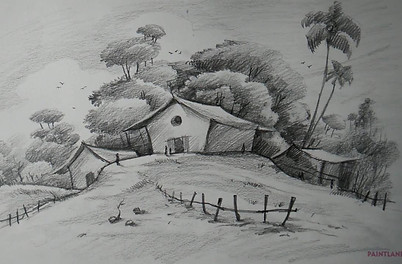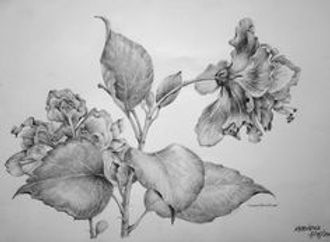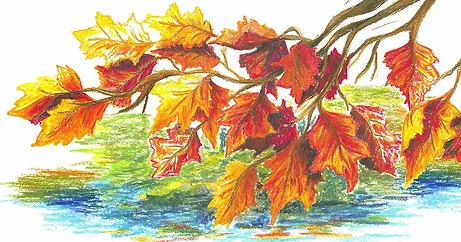

Drawing/Sketching/Painting
The objective of the course is to enhance and refine the skills of the Hidden Talents. Nurture them to understand the methodologies, materials and fast changing techniques.
Drawing
Drawn animation – also known as traditional animation, or cel animation – is when each frame of the film is hand-drawn on transparent cel sheets. In the beginning, cels were used only for backgrounds. The characters were drawn on sheets of rice paper, then placed under the drawn background to complete a scene.
Free Hand Drawing
Freehand drawing is the ability to draw something without depending on instruments or something else to draw. We guide the drawing process with only our hand, and it depends on our observational skills. Instead of tracing the likeness of a cat, or using instruments to do it for us, we draw it by hand.


Objects & Nature Study
NATURE-STUDY, as a process, is seeing the things that one looks at, and the drawing of proper conclusions from what one sees. Its purpose is to educate the child in terms of his environment, to the end that his life may be fuller and richer.
Different Techniques
Proportion, Volume
Visual Perspective
Eye Level & Vanishing Point
Horizontal and Vertical lines
Bold and Rhythmic lines
Relationship between lines
Value & Texture
Sketching from different angles
Indoor Sketching
Sketching is an essential part of the interior design process. Your sketches are your first starting point when it comes to planning the room layout and finer details of the scheme. Sketching is a skill that needs to be learnt.


Still Life
The term “still life” describes a work of art that shows inanimate objects from the natural or man-made world, such as fruit, flowers, dead game, and/or vessels like baskets or bowls. Looked at another way: still lifes depict things that are “still” and don't move. Still life is a genre that spans art history
Course Overview
-
Introduction to various techniques.
-
Study of foreground and background with drapery.
-
Texture study with different materials like cloth, wood, glass, bronze, mirror, china clay, terracotta, etc.
-
Selection and arrangement of objects.
-
Eye level, source of light, tonal variation, composition.
-
Drawing from different angles.
-
Details about light & shades.
8. Medium - Pencil, Pencil Colours
Figure Drawing
A figure drawing is a drawing of the human form in any of its various shapes and postures, using any of the drawing media. The term can also refer to the act of producing such a drawing. The degree of representation may range from highly detailed, anatomically correct renderings to loose and expressive sketches.

Course Overview
-
Freehand drawing from human figure to study proportion.
-
Stick drawing and Block drawing.
-
Basic anatomy, Head study from different angles.
-
Full figure study.
-
Quick sketching and Finished sketching.
-
Sketching practice of different parts of body.

Landscape
Landscape painting, also known as landscape art, is the depiction of natural scenery such as mountains, valleys, trees, rivers, and forests, especially where the main subject is a wide view—with its elements arranged into a coherent composition.
Course Overview
-
Basic intoduction with theory.
-
Selection of artistic view with picture frames.
-
Detail study of variation in sunlight.
-
Addition and elimination, simplification, eye level and Vanishing Point.
-
Perspective, balance and rhythms in composition.
-
Study of Cityscape and Seascape.
-
Medium - Pencil, Charcoal, Crayon, Water Colours and Oil Colours(Any Two).
Portrait
A portrait is a painting, photograph, sculpture, or other artistic representation of a person, in which the face and its expressions are predominant. The intent is to display the likeness, personality, and even the mood of the person.

Course Overview
-
Technical details, measurements.
-
Detail study of skull, character and expression.
-
Space dividation with geometrical sketch.
-
Super realistic portraits through graphic techniques.
-
Medium - Pencil, Charcoal, Dry Crayon, Water Colour and Oil Colours.

Nature Study / Foliage
The term nature study, in art, denotes a practice determined by direct visual contact between the drawer or painter and the natural subject. The creative act is determined by the interplay of eye and hand, with the aim of committing what is seen to the paper or canvas at hand
Course Overview
-
Basic intoduction with theory.
-
Detail study of different trees, leaves, flowers.
-
Medium - Pencil, Oil Pastel, Pencil Colour, Water Colour.
Composition
A composition is defined as the way the objects and subjects that you're going to draw are arranged, organized, and combined. You may want to arrange the things you're going to draw. You may want to organize them into groups. Also, you may want to combine different things, such as different types of fruit in a bowl.

Course Overview
-
Principal of design, distribution of space.
-
Importance of line, tone, texture, colour, form, content.
-
Negative and Positive Designing
-
Design exercise in different media.
-
Different figurative composition practice
-
(f) Medium Medium - Pencil, Acrylic colour, Poster.
Use of Medium in Different Techniques

H.B. Pencil & Shading
They allow you to control lightness and darkness by shading more or less heavily. However, sometimes you want more intensity or find that you can't get your mid-range pencil to go as light or dark as you want. HB stands for "hard black", which means "medium hard".
Course Overview
-
Shading Gradations
-
20 Shades with single pencil
-
Light to dark technique
-
Dark to light technique
Charcoal
Artists' charcoal is charcoal used as a dry art medium. Both compressed charcoal and charcoal sticks are used. The marks it leaves behind on paper are much less permanent that with other media such as graphite, and so lines can easily be erased and blended.

Course Overview
-
Drawing with charcoal stick.
-
Life drawing and portrait.
-
Reverse painting with eraser.
-
Use of cloth and cotton.

Pencil Colours
Colored pencil techniques are similar to those of other drawing media, including hatching and crosshatching to create complex colors and tones on paper, and mastering how to build up color gradually while working with the white of the drawing surface, which is usually paper.
Course Overview
-
Study of colour wheel
-
Mixing of two colours
-
Tonal variation
Dry Crayons (Pastels)
Pastel, dry drawing medium executed with fragile, finger-size sticks. These drawing crayons, called pastels, are made of powdered pigments combined with a minimum of nongreasy binder, usually gum tragacanth or, from the mid-20th century, methyl cellulose.
.jpg)
Course Overview
-
Different effects with different techniques
-
Abstract & Semi abstract painting
-
Fixing method
Oil Pastels

An oil pastel is a painting and drawing medium formed into a stick which consists of pigment mixed with a binder mixture of non-drying oil and wax. They differ from other pastel sticks which are made with a gum or methyl cellulose binder, and from wax crayons which are made without oil.
Course Overview
-
Still life
-
Figure drawing
-
Creative Drawing
-
Landscaping
Water Colours
Watercolour, also spelled Watercolor , pigment ground in gum, usually gum arabic, and applied with brush and water to a painting surface, usually paper; the term also denotes a work of art executed in this medium.

Course Overview
-
Theory
-
Wet and wet technique
-
Use of handmade paper
-
Light to dark effect.
-
Outdoor practice
-
Creative painting

Acrylic Colours
Acrylic paint is a fast-drying paint made of pigment suspended in acrylic polymer emulsion and plasticizers, silicone oils, defoamers, stabilizers, or metal soaps. Most acrylic paints are water-based, but become water-resistant when dry.
Course Overview
-
Use of Acrylic Colours
-
Texture Work
-
Mixing Work
-
Experimental Work
-
Abstract & Semi abstract painting
-
Contemporary Art
Oil Colours
Oil paint is a type of slow-drying paint that consists of particles of pigment suspended in a drying oil, commonly linseed oil. The viscosity of the paint may be modified by the addition of a solvent such as turpentine or white spirit, and varnish may be added to increase the glossiness of the dried oil paint film.

Course Overview
-
Theory
-
Techniques
-
Types of brushes
-
Use of Spatula, roller
-
Preservation
-
Detail practice (Portrait Study, Realistic Figures, Imaginary Compositions)
